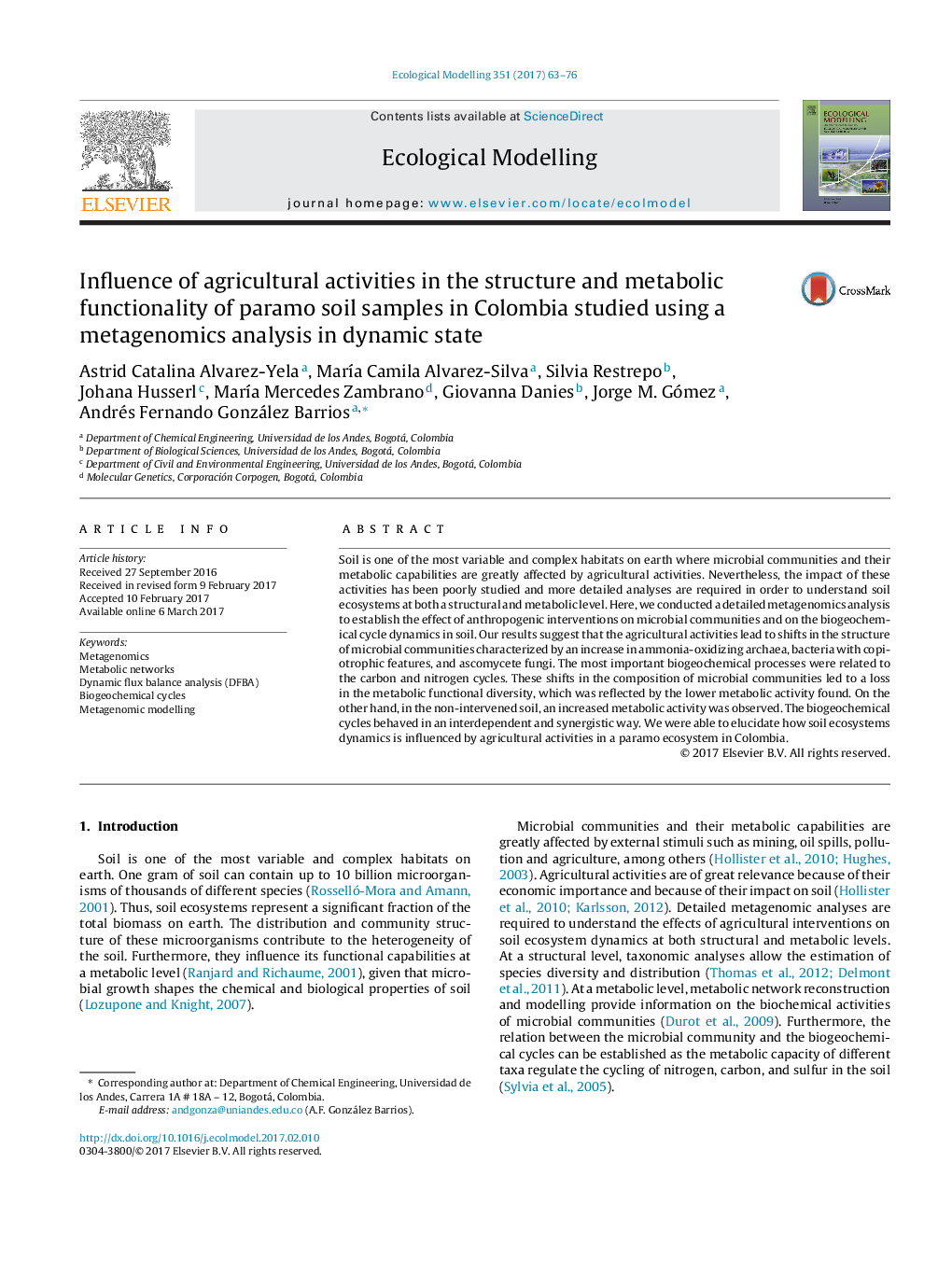| Article ID | Journal | Published Year | Pages | File Type |
|---|---|---|---|---|
| 5742220 | Ecological Modelling | 2017 | 14 Pages |
â¢Agricultural activities could lead to an increase in ammonia-oxidizing archaea.â¢Agriculture could increase copiotrophic bacterias and ascomycete fungi on soils.â¢Shifts in microbial communities in soils could change ecosystems functionality.â¢Agricultural activities could cause a loss in the microbial diversity.â¢We simulated for the first time the soil metabolic behavior as a dynamic metagenome.
Soil is one of the most variable and complex habitats on earth where microbial communities and their metabolic capabilities are greatly affected by agricultural activities. Nevertheless, the impact of these activities has been poorly studied and more detailed analyses are required in order to understand soil ecosystems at both a structural and metabolic level. Here, we conducted a detailed metagenomics analysis to establish the effect of anthropogenic interventions on microbial communities and on the biogeochemical cycle dynamics in soil. Our results suggest that the agricultural activities lead to shifts in the structure of microbial communities characterized by an increase in ammonia-oxidizing archaea, bacteria with copiotrophic features, and ascomycete fungi. The most important biogeochemical processes were related to the carbon and nitrogen cycles. These shifts in the composition of microbial communities led to a loss in the metabolic functional diversity, which was reflected by the lower metabolic activity found. On the other hand, in the non-intervened soil, an increased metabolic activity was observed. The biogeochemical cycles behaved in an interdependent and synergistic way. We were able to elucidate how soil ecosystems dynamics is influenced by agricultural activities in a paramo ecosystem in Colombia.
